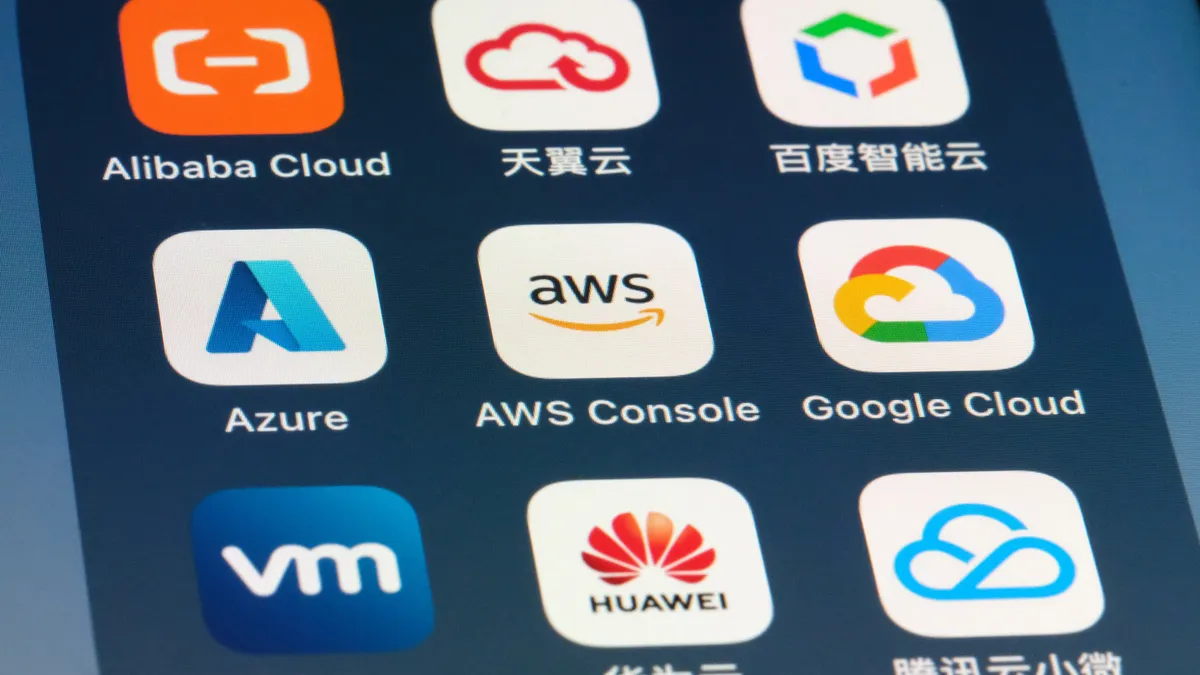Technology is more and more of a priority for businesses, with strategic investments being made to pivot corporations for the future of technology. But what will that look like?
To adapt and keep up, companies are rolling out bimodal strategies, which highlight "planning and predictable change" at the same time as there is emphasis placed on "experimental and disruptive change," technology research firm Gartner reported last week. Those bimodal strategies will allow enterprises to roll out new and innovative technologies in the coming year.
Global IT spending will reach $3.5 trillion in 2017, up almost 3% above 2016’s estimated spending of $3.4 trillion, according to projections released at the Gartner Symposium/ITxpo in Orlando, FL last week. In particular, the research firm projects companies will increase spending significantly in software and IT services. This highlights the continued shift toward as a Service models, where companies contract out work or purchase the necessary software, rather than creating it in house.
But, what technology will see an increased presence in the enterprise in the coming year? Gartner predicts the following 10 technology trends for 2017:
1. AI and the advancement of machine learning
We’ve seen this one coming. It’s been on the horizon for a while with companies working to roll capabilities they think will reshape how work is done. Organizations see huge potential for machines that can solve complicated problems (I’m looking at you Watson, with your cancer fighting ways). To help adapt to the change, industry leaders are teaming to create better public awareness and understanding of the technology.
Gartner expects the tech to move beyond rule-based problem solving to creating "intelligent" machines that can adapt, and even operate, autonomously. It will be used in everything from devices to apps and services, employed by both consumers and businesses alike.
Some industries, in particular, will look to snap up the tech, including business services, advertising and media and entertainment, according to a recent report from Tractica.
2. Intelligent apps
The move toward intelligence and automation is part of a larger trend to make products and services more intuitive to customer needs. Gartner considers intelligent apps technologies such as virtual personal assistants (VPAs), which make everyday tasks easier while adapting to understand user behavior and grow more intelligent. So the Siris and the Alexas of the technology world will see growing adoption in 2017.
So too will virtual customer assistants, intelligent apps used particularly in the sales and customer service space, according to Gartner. This isn’t Microsoft’s Clippy of a bygone era. Instead, the applications anticipate user behavior and can help with the more mundane tasks that persist in the workplace.
Intelligent agents will grow in use in the coming years. Eventually, technologies such as x.ai’s virtual assistant Amy, and its male counterpart Andrew, will become commonplace in the enterprise. Over the next 10 years, Gartner expects almost every application, services or app to include at least some amount of AI.
3. Intelligent things
Rather than standalone "intelligent things," such as drones or smart appliances, Gartner forecasts in the coming year those items will start to collaborate, allowing for more natural interaction natural surroundings and people.
Yes, this is self-driving cars and the Internet of Things, which are already present in the technology landscape. But, rather than standalone objects that can pull off a neat trick or two for the entertainment of many, devices will begin to work together to create an ecosystem that can intuit behavior and adapt to accommodate user needs.
So AT&T’s drones equipped with AI? Yeah, we’ll see a lot more of those and other applications of the intelligent technology in the coming year.
4. Conversational systems
While this may seem like more chatbots or microphone-enabled devices, Gartner expects conversational systems to grow in application beyond ordering pizza or speaking with Microsoft’s rogue Tay. In 2017, the research firm projects a growing number of endpoints, with the conversational ecosystem expanding to encompass social communities as well as both government and business interactions.
There will not only be a shift in who people interact with via conversational tools, but also how people will interact, expanding beyond desktop computers and mobile devices.
Though some think the potential for bots is a bit overhyped, Gartner expects conversational systems will start cooperating and interacting with one another to create a "new continuous and ambient digital experience."
5. Mesh app and service architecture
Gartner, overall, expects increased collaboration with devices, creating an increased "digital mesh." Part of this is an augmentation of what users see as an "application." Rather than merely a simple software, back-end services will have an architecture that encompasses mobile, web, desktop and IoT apps linked together to create the application experience.
To accommodate this move, Gartner projects companies will have to create scalable and agile services, with APIs employed at multiple levels. The increased demand for digital interaction is expected to drive significant growth in the API market, as users call for a more immersive experience.
6. VR and AR
What Gartner refers to as "immersive technology" will change the way those in the enterprise interact, both with one another and with software systems. Because of the continued shift toward IoT and the presence of many devices in the enterprise — including wearables and increasingly powerful smartphones (but not too powerful, because companies don’t want technology packing a punch, er, or burning) — virtual and augmented reality technologies will help create a more seamless system for the users, Gartner projects.
Though skeptics persist, industry leaders are already working on platforms to assist with smart glasses adoption. VMware, for example, recently announced a feature in its enterprise mobility and management platform can manage smart glasses, which exist alongside both desktop and mobile endpoints.
7. "Digital Twin"
Gartner’s "digital twin" is a software model or replica of a physical thing or system, which relies on sensor data to understand what is happening to the physical thing so it can make improvements and respond to any changes.
Digital twins will see broad adoption in enterprises that rely on equipment for service, such as in manufacturing or a factory setting. Rather than having to physically inspect a device to see if it’s malfunctioning, a company can stay in tune with any changes, allowing organizations to respond in a timely manner. The digital twin could even anticipate a potential malfunction if it senses environmental changes.
The research firm projects that digital twins will become intermediaries for those who fix and work with devices and traditional monitoring tools.
8. Digital technology platforms
What Gartner refers to as digital technology platforms really comes down to five main areas of business technology: information systems, customer experience, analytics and intelligence, IoT and "business ecosystems."
Though the five technologies may seem as a given in today’s modern enterprise, many, if not most, companies are still in the midst of a digital transformation. While efforts are underway, companies still have a long way to go before they are ready for modern era of business technology.
9. Blockchain
Here's the buzzword we can’t stop hearing about: The technology is rapidly moving beyond the financial services sector toward other industries looking to verify the integrity of critical information. A distributed ledger where transactions are grouped together in "blocks," blockchain employs "crytographic trust" and "assurance mechanisms" that organizations can trust, holding the potential to significantly disrupt operating models, according to the research firm.
Recently, many organizations have reported efforts to employ blockchain. Swedish telecom company Ericcson is using blockchain to ensure data integrity and to help service as the foundation for its growing cloud presence. The Defense Department’s research arm, DARPA, is even looking into the technology to help secure both nuclear weapons and satellite security.
As the technology grows in potential application, more companies will move to create services that support it, such as IBM’s suite of blockchain services.
10. Adaptive security
With enterprises applying newer and more innovative technologies, the threat landscape has grown even more malicious. Companies, in turn, have to adapt to that environment, accepting that risk is a given in the enterprise.
Companies need to remain constantly aware of user and entity behavior particularly in IoT settings, according to Gartner. Part of the new era of security is how companies establish preventative measures and respond to incidents. So, if an employee is phished, for example, rather than a slap on the wrist, the incident calls for additional end user training.





















